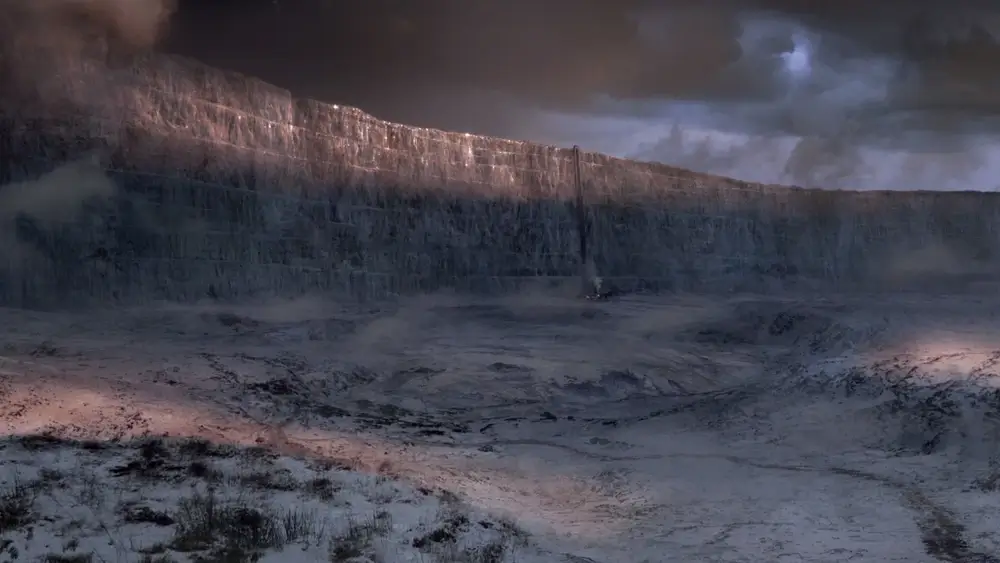A Genre That Redefined Global Science Fiction
https://www.youtube.com/watch?v=nFVqUx1jcDc
Japanese science fiction stands as one of the most influential and essential genres in global
entertainment, offering a unique blend of cultural depth, technical innovation, and philosophical
complexity that has fundamentally shaped modern science fiction across all mediums. From the
early literary works of the Meiji period to contemporary anime masterpieces, Japanese sci-fi
presents distinctive perspectives on technology, humanity, and the future that cannot be found
elsewhere . The genre’s ability to seamlessly merge traditional Japanese cultural elements
with cutting-edge scientific concepts, combined with its unprecedented global influence on
Western science fiction, makes it indispensable for anyone seeking to understand the full
spectrum of speculative fiction. Its contributions span groundbreaking visual techniques,
profound thematic explorations of post-war trauma and technological anxiety, and innovative
storytelling approaches that have inspired countless creators worldwide .
Historical Foundations and Cultural Origins
Historical Foundations and Cultural Origins
Japanese science fiction possesses remarkably deep historical roots that extend far beyond its
modern manifestations, creating a rich foundation that distinguishes it from Western
counterparts. The genre’s origins can be traced back over a millennium to early Japanese
literature that contained elements of proto-science fiction, demonstrating the culture’s long
standing fascination with speculative concepts . The ancient tale of “Urashima Tar ,” first
described in the Nihongi in 720 CE, involves time travel to a distant future where a fisherman
discovers himself three hundred years ahead of his time, finding his village transformed and his
family long deceased . Similarly, the 10th-century narrative “The Tale of the Bamboo Cutter”
presents what may be considered early science fiction, featuring Kaguya-hime, a princess from
the Moon sent to Earth during a celestial war and later retrieved by her extraterrestrial family,
complete with manuscript illustrations depicting round flying machines resembling flying
saucers .
The modern development of Japanese science fiction began during the Meiji Restoration period,
when Japan’s systematic importation of Western ideas coincided with translations of influential
works by Jules Verne, particularly “Around the World in Eighty Days,” published in Japanese
between 18781880 . This cultural exchange established the term “kagaku shsetsu”
(scientific novel) as early as 1886, demonstrating the rapid adoption and adaptation of science
fiction concepts within Japanese literary culture . Pioneering figures like Shunr Oshikawa
emerged as foundational authors, with his 1900 work “Kaitei Gunkan” Undersea Warship)
describing submarines and accurately predicting the coming Russo-Japanese war, establishing
him as the ancestor of Japanese science fiction .
The genre’s evolution was significantly influenced by key pioneering authors who established
distinctly Japanese approaches to speculative fiction. Unno Juza, whose real name was Sano
Sh ichi, emerged as the founding father of Japanese science fiction, beginning his career in
1928 with “The case of the mysterious death in the electric bath” and continuing to produce
numerous science fiction novels throughout the Pacific War period . His work, influenced by
Nikola Tesla’s scientific innovations, demonstrated the genre’s capacity to engage with
contemporary technological developments while maintaining distinctly Japanese
perspectives . The establishment of the Science Fiction and Fantasy Writers of Japan in 1963
further institutionalized the genre’s development, with founding members including the
legendary “Three Masters” of Japanese science fiction: Komatsu Saky , Hoshi Shin’ichi, and
Tsutsui Yasutaka .
Technical Innovation and Visual Artistry
Japanese science fiction has consistently pushed the boundaries of technical innovation,
particularly in visual media, creating aesthetic and technological standards that have influenced
global entertainment production. The tokusatsu tradition, literally meaning “special
photography” or “special effects,” represents one of Japan’s most significant contributions to
science fiction cinema. This genre emerged from early Japanese theater forms like
kabuki and bunraku, which incorporated primitive special effects in fight scenes and puppetry,
evolving into sophisticated filmmaking techniques that would define Japanese science fiction
cinema . The work of Eiji Tsuburaya, beginning with his breakthrough on “Princess Kaguya”
1935) and “The Daughter of the Samurai” 1937, established the foundation for modern
tokusatsu that would later culminate in the groundbreaking 1954 film “Godzilla”
.
The visual innovation of Japanese science fiction reached unprecedented heights with the
emergence of anime and manga, mediums that allowed for unlimited creative expression
unconstrained by live-action limitations. Katsuhiro Otomo’s “Akira,” beginning as a manga in
1982 and adapted into an anime film in 1988, revolutionized the cyberpunk aesthetic and
established new standards for animation quality and complexity
. The film’s distinctive visual style, mixing bright neon lights with dark, gritty urban environments, created an iconic
aesthetic that influenced countless subsequent productions . This visual approach perfectly
captured the dystopian atmosphere of post-apocalyptic Neo-Tokyo while showcasing technical
animation achievements that were unprecedented at the time
The influence of “Akira” extended far beyond its immediate impact, spawning a wave of
technically innovative productions that continued to push visual boundaries. “Ghost in the Shell”
1995) further advanced the medium’s technical capabilities while exploring complex
philosophical themes through stunning visual imagery . The film’s influence was so significant
that when the Wachowski sisters pitched “The Matrix,” they reportedly screened “Ghost in the
Shell” in its entirety and stated their desire to create something similar in live-action . This
demonstrates how Japanese science fiction’s technical innovations directly influenced major
Western productions, establishing visual and conceptual templates that continue to inform global
science fiction cinema .
Cultural Reflection and Thematic Depth
Japanese science fiction serves as a powerful lens for understanding Japanese culture and
society, offering insights into the nation’s collective psyche, historical experiences, and ongoing
cultural tensions. The genre functions as more than entertainment; it provides a vibrant reflection
of Japan’s identity while navigating the complex relationship between tradition and modernity
that characterizes the country’s ongoing evolution . Anime and manga, in particular, showcase
diverse aspects of Japanese culture, from food, language, and architecture to religious
ceremonies, customs, art, and mythology, creating comprehensive cultural portraits that would
be difficult to achieve through other mediums .
The post-World War II period fundamentally shaped Japanese science fiction’s thematic
preoccupations, with many works serving as allegories for the nation’s wartime trauma and
atomic anxieties. “Godzilla” 1954) stands as perhaps the most powerful example of this
thematic depth, functioning as a direct metaphor for nuclear destruction and the consequences
of unchecked scientific progress . The film emerged from Japan’s collective fears and
anxieties following World War II, with the titular monster representing the destructive force
unleashed by nuclear testing . Over time, Godzilla’s character evolved from a purely
destructive force to a more complex figure, sometimes serving as Japan’s protector against
other threats, symbolizing the nation’s resilience and determination to overcome adversity .
The thematic sophistication of Japanese science fiction extends to its exploration of
technological anxiety and human identity in an increasingly mechanized world. Works like Kb
Abe’s “Inter Ice Age 4” 19581959, considered Japan’s first proper full-length science fiction
novel, tackled complex themes including climate disaster, genetic manipulation, and artificial
intelligence decades before these became mainstream concerns . The novel’s exploration of a
fortune-telling computer capable of reading human minds and predicting behavior reflects early
Japanese engagement with questions about technology’s role in human society . These
thematic preoccupations demonstrate Japanese science fiction’s capacity to address
fundamental philosophical questions while remaining grounded in specific cultural contexts and
historical experiences.
Global Influence and Cross-Cultural Impact
The international impact of Japanese science fiction cannot be overstated, as it has
fundamentally transformed global perceptions of the genre while inspiring countless creators
across different mediums and cultures. During the 1980s, a phenomenon emerged that media
observers described as “Japan taking over the world,” reflecting the profound influence of
Japanese popular culture, including science fiction, on global entertainment . This
influence manifested in numerous Western science fiction works that began incorporating
Japanese themes, aesthetics, and cultural concepts, fundamentally altering the genre’s
landscape .
William Gibson’s “Neuromancer” 1984) exemplifies this cross-cultural influence, presenting a
cyberpunk world dominated by Japanese culture and aesthetics . The novel’s depiction of a
future shaped by Japanese technological and cultural hegemony reflected contemporary
Western perceptions of Japan’s economic and technological prowess during the 1980s .
Similarly, films like “Blade Runner” 1982) incorporated extensive Japanese and Asian visual
elements, creating futuristic environments that drew heavily from Japanese urban aesthetics
and cultural imagery . These works demonstrate how Japanese science fiction concepts and
visual approaches became integral to Western creators’ visions of the future .
The influence of specific Japanese science fiction works on Western creators reveals the depth
of this cross-cultural exchange. “Akira” proved particularly influential in introducing Western
audiences to anime and manga as sophisticated storytelling mediums capable of addressing
complex themes . The film’s impact extended throughout the 1990s and 2000s, inspiring
subsequent anime productions like “Ghost in the Shell,” “Cowboy Bebop,” and “Serial
Experiments Lain,” which continued to influence global popular culture . These works
established aesthetic and thematic templates that Western creators continue to reference and
adapt, demonstrating the lasting impact of Japanese science fiction innovation on global
entertainment production .
Diversity of Mediums and Storytelling Approaches
Japanese science fiction’s strength lies partially in its remarkable diversity across multiple
mediums, each offering unique storytelling possibilities and reaching different audiences with
varying approaches to speculative fiction. The tokusatsu tradition encompasses numerous
subgenres, including kaiju films like the “Godzilla” and “Gamera” series, superhero productions
such as “Kamen Rider” and “Metal Hero” series, Kyodai Hero shows like “Ultraman,” and mecha
series like “Giant Robo” . This diversity allows Japanese science fiction to explore different
scales of storytelling, from intimate character studies to epic battles between giant monsters
and robots
.
The manga and anime mediums provide perhaps the most extensive range of science fiction
storytelling approaches, spanning from hard science fiction to surreal experimental works. Series
like “Astro Boy” pioneered science fiction themes in animation while exploring post-war anxieties
about technology and humanity’s relationship with artificial intelligence . The character,
created by Osamu Tezuka and featuring a robot designed to replace a scientist’s deceased son,
established templates for examining human-machine relationships that continue to influence
contemporary science fiction . More recent works demonstrate the continued evolution of
these themes, with series spanning from action-oriented space operas to philosophical
explorations of consciousness and identity .
Literary science fiction in Japan maintains its own distinct traditions while continuously evolving
to address contemporary concerns. The Science Fiction and Fantasy Writers of Japan,
celebrating its sixtieth anniversary, has fostered generations of writers who have explored
diverse themes and approaches within the genre . Contemporary authors continue to produce
works that blend traditional Japanese cultural elements with cutting-edge scientific concepts,
creating science fiction that remains distinctly Japanese while addressing universal themes
.
This ongoing literary tradition ensures that Japanese science fiction continues to evolve and
offer fresh perspectives on familiar speculative concepts, maintaining its relevance and influence
across different cultural contexts .
Japanese science fiction represents an indispensable component of global speculative fiction,
offering unique perspectives, innovative techniques, and profound cultural insights that cannot
be found elsewhere in the genre. Its deep historical roots, stretching back over a millennium to
early Japanese literature, provide a foundation for understanding how different cultures
approach speculative concepts and technological anxieties . The genre’s technical
innovations, particularly in visual mediums like anime, manga, and tokusatsu, have established
aesthetic and production standards that continue to influence global entertainment
production . Most significantly, Japanese science fiction’s capacity to reflect cultural
values, historical experiences, and philosophical concerns while maintaining universal appeal
demonstrates the genre’s power to transcend cultural boundaries while remaining grounded in
specific cultural contexts .
The global influence of Japanese science fiction extends far beyond entertainment value,
fundamentally shaping how creators worldwide approach speculative storytelling and visual
design. From the cyberpunk aesthetics pioneered by “Akira” to the monster movie traditions
established by “Godzilla,” Japanese science fiction has provided templates and inspiration that
continue to influence contemporary productions . For anyone seeking to understand the
full scope and potential of science fiction as a genre, engaging with Japanese works is not
merely recommended but essential, as these productions offer perspectives, techniques, and
thematic approaches that have fundamentally expanded the boundaries of speculative fiction
and continue to point toward future possibilities for the genre’s evolution.
Sources
https://en.wikipedia.org/wiki/Japanese_science_fiction
https://moreby.us/resources/blog/anime-a-reflection-of-japanese-culture/
https://vocal.media/geeks/godzilla-a-cultural-icon-and-global-phenomenon
https://www.youtube.com/watch?v=8XeBW08HbMk
https://www.youtube.com/watch?v=EdJXZaoSiy4
https://en.wikipedia.org/wiki/Unno_Juza
https://www.nippon.com/en/japan-topics/g02351/
https://en.wikipedia.org/wiki/Tokusatsu
https://tokusatsunetwork.com/2014/03/the-history-of-tokusatsu-part-1-godzilla/
https://www.bokksu.com/blogs/news/beyond-godzilla-exploring-the-diverse-world-of-tokusatsu-in-ja
pan
https://en.wikipedia.org/wiki/Japanese_cyberpunk
https://www.youtube.com/watch?v=kAEhlUqKLok
https://en.wikipedia.org/wiki/Inter_Ice_Age_4
https://www.reddit.com/r/books/comments/1e3k7ii/howwhen_did_japan_come_to_frequently_appear_in/
https://anilist.co/article/Top-50Sci-Fi-Anime-of-All-Time
https://www.reddit.com/r/printSF/comments/185bwvt/japanese_scifi_with_elements_of_japanese_cultu


